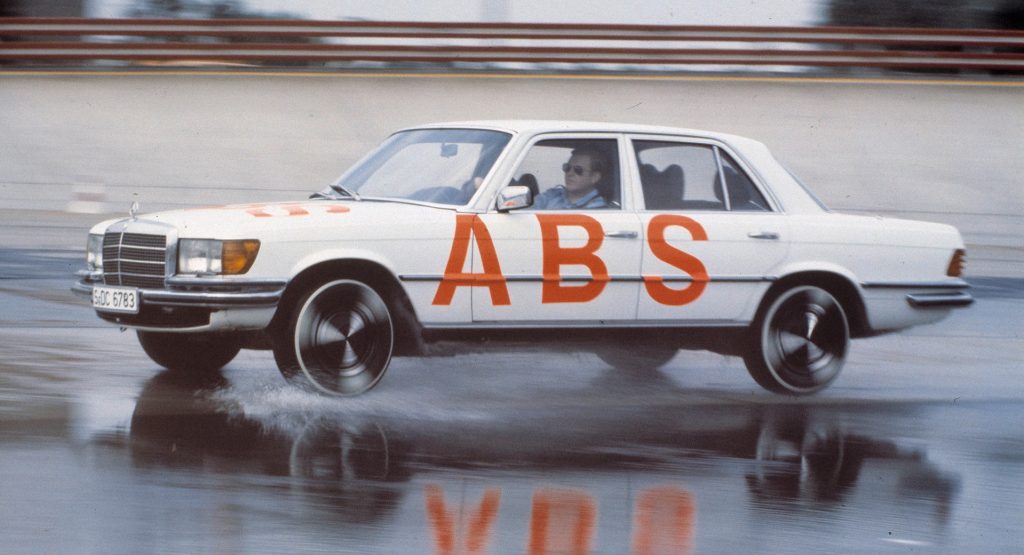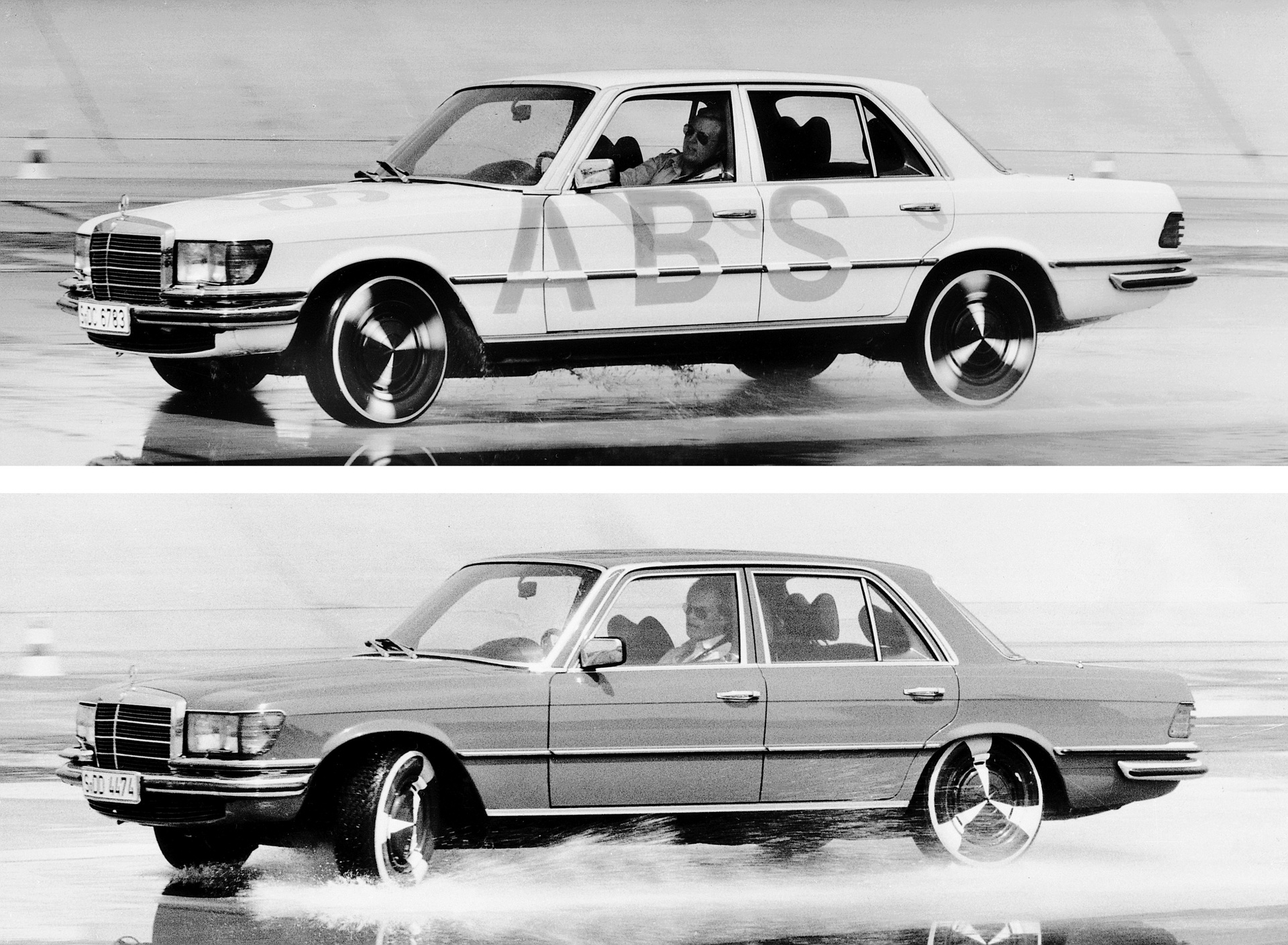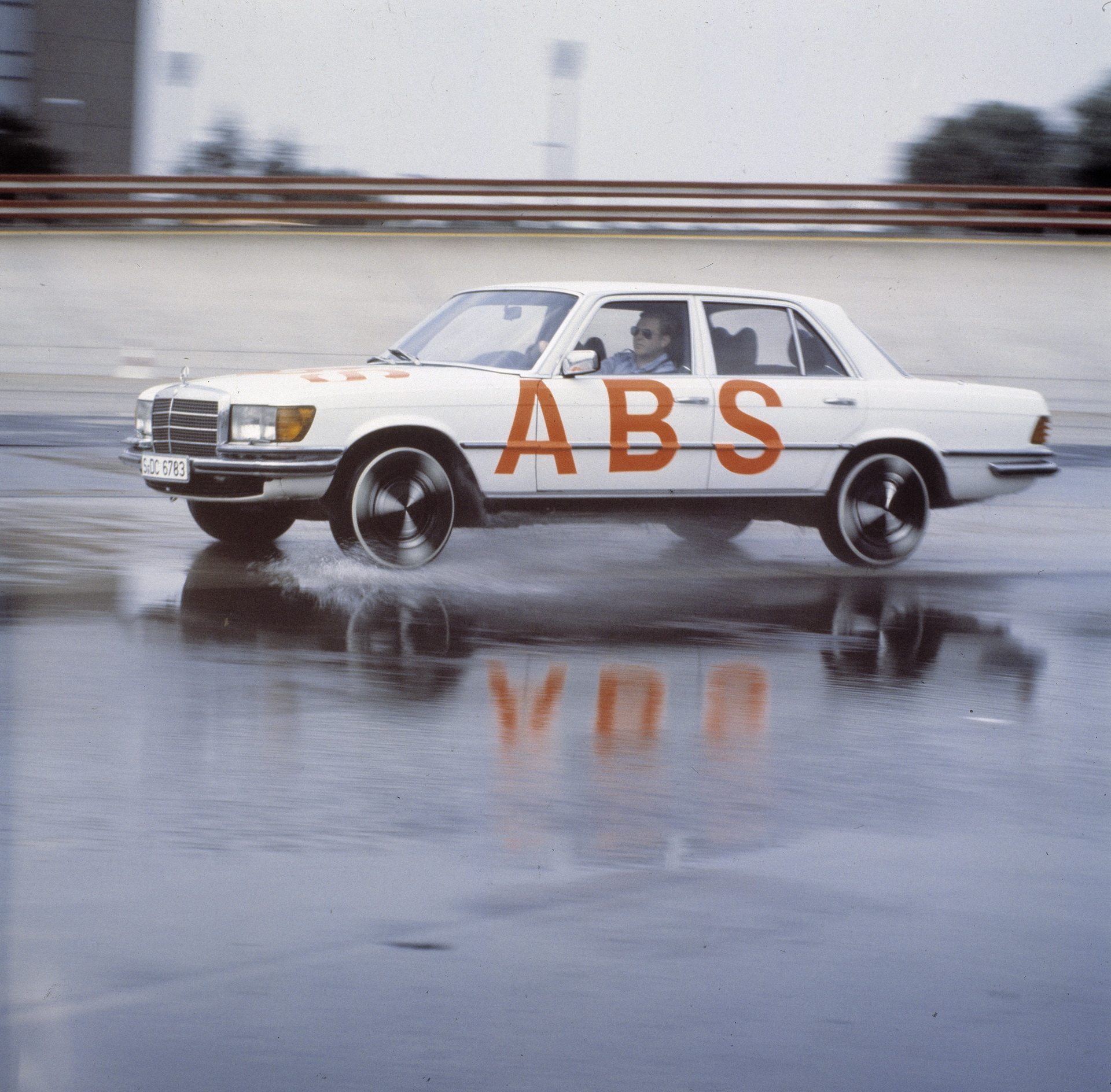It’s been four decades since the world first met a revolutionary system that would eventually make our cars considerably safer. We’re talking of course about the anti-lock braking system or ABS.
ABS was originally presented from August 22 to 25 in 1978 by Mercedes and Bosch, before becoming available -for the first time in a production car- in the W116 S-Class at the end of 1978.
Until ABS came along, maintaining full steering control under emergency braking was a big safety issue, especially on a slippery surface. It was a revelation as far as car safety is concerned, not to mention it brought the automobile into the era of digital technology.
Back in the day, Mercedes explained the new safety tech in a brochure like this: “The anti-lock braking system uses a computer to monitor the change in rotational speed of each wheel during braking. If the speed slows too quickly (such as when braking on a slippery surface) and the wheel risks locking, the computer automatically reduces the brake pressure. The wheel accelerates again and the brake pressure is increased again, thereby braking the wheel. This process is repeated several times in a matter of seconds”.
Despite sounding complicated, ABS was simply eye-opening in practice; even on the most slippery surfaces, it enabled the car to not only deliver the maximum physically possible braking force without the wheels locking up, but also allowed the driver to maintain control of the vehicle’s trajectory as the steering was not affected by locked front wheels.
It took just two years for Mercedes to offer as an option the ABS system in every passenger car, while in 1981, the company also made it available to its commercial vehicles as well. From October 1992, all Mercedes-Benz cars featured the anti-lock braking system as standard.









